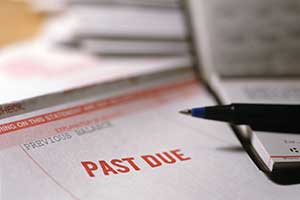
If you are struggling to pay off debt and make ends meet, bankruptcy can provide you with protection from creditors and give you a fresh start. Still, many people are afraid to file because of myths, half-truths and misinformation, and therefore they never get the relief they need.
Whether you decide to file for bankruptcy or not should be based on real facts and solid information. The experienced Ohio bankruptcy attorneys at Fesenmyer Cousino Weinzimmer can help you expose bankruptcy myths and determine if bankruptcy would be right for you.
Here are some of the most common myths:
Myth 1 – Bankruptcy will ruin my credit.
While bankruptcy can remain on your record for up to 10 years, there are steps you can take to rebuild your credit as soon as your bankruptcy is discharged. Bankruptcy wipes out debt that may be negatively reporting, which helps your FICO credit score increase. After bankruptcy, you may actually be in a better position to get credit because it reduces your debt-to-income ratio in many cases. Also, because you won’t be able to file Chapter 7 again for another eight years, you may appear to be a better risk. Be aware that many companies will give you credit, but interest rates will likely be higher for the first few years. You can build your credit and lower interest rates by making timely payments on secured debts for property that you choose to keep.
Myth 2 – I will lose everything in bankruptcy.
People who file for bankruptcy can often keep their home, cars, and other personal property. Ohio has some of the best exemptions in the country that allow you to keep property, up to certain limits, including but not limited to:
- Homestead – Your home, farm, or trailer
- Household goods
- Motor vehicle
- Jewelry
- Insurance benefits, such as health or disability benefits
- Pensions and Retirement plans
- Alimony and child support
- Public benefits, such as aid to the blind or Veterans benefits
Myth 3 — Bankruptcy will wipe out all my debt.
What happens to your debt depends on your individual circumstances and the chapter of the bankruptcy code under which you file. Chapter 7 bankruptcy mainly focuses on providing relief from your unsecured creditors while Chapter 13 bankruptcy will repay some of your obligations through a repayment plan. Additionally, some debts cannot be discharged in either Chapter 7 or Chapter 13 for debts that are non dischargeable in bankruptcy.
Myth 4 – Everyone will know that I filed bankruptcy.
Unless you decide to tell people, only creditors to whom you owe money or who pull your credit report when you apply for credit will receive notice of your case from the bankruptcy court Even though bankruptcy proceedings are public information, and anyone can gain access to them, it’s unlikely anyone will. Few regular newspapers publish bankruptcy filings, so non-creditors must research your name through court records or legal periodicals to find this information, and most people will not bother to go to the trouble.
Myth 5 – You can pick what debts to include in your bankruptcy.
No, if you file for bankruptcy, you have to list all of the debts that you owe and the property that you own. You cannot choose and discriminate between creditors, but there are options. If there are some debts you would like to keep paying, you can continue to make payments on those accounts voluntarily or enter into a reaffirmation agreement allowing that debt to survive bankruptcy.
Myth 6 – If you file bankruptcy, your spouse will have to as well.
While married couples often file bankruptcy jointly, this is not necessary. Depending on your circumstances, you can file together or separately. In many cases, it makes sense for husband and wife to file together, but in some instances, the spouse might not want to file. For example, sometimes one spouse has all the debt, or one spouse wants to keep property that’s in his or her name only, so it’s preferable to have the other spouse file individually.
Remember, bankruptcy issues may be complicated, but the experienced Ohio bankruptcy attorneys at Fesenmyer Cousino Weinzimmer understand the issues and the difficult decisions involved in taking this step and starting to rebuild your credit. We will work with you to make sure you understand your options and help you decide on solutions that make sense in your individual case.
Call Fesenmyer Cousino Weinzimmer at one of our office branches at 614-228-4435 (Columbus), 937-222-7472 (Dayton), or 877-654-5297 (Cincinnati) for a free consultation so we can determine what debt relief solutions will work best for you.


